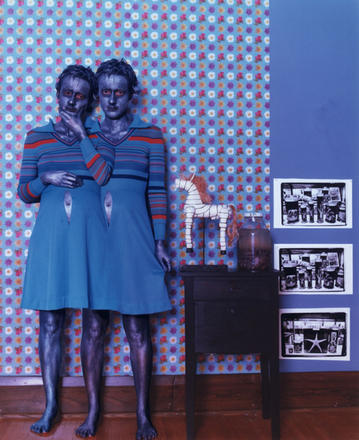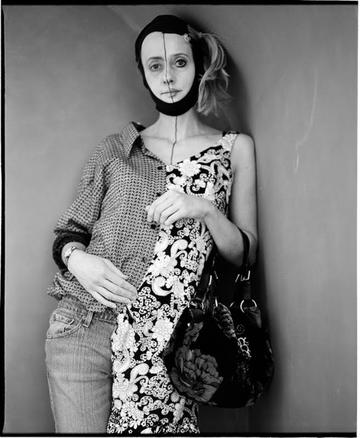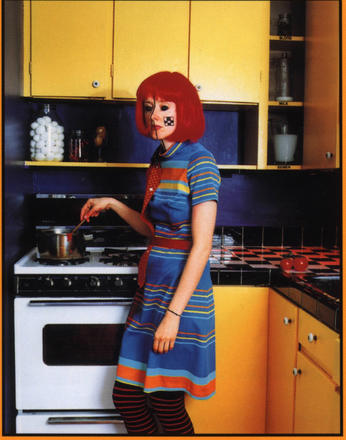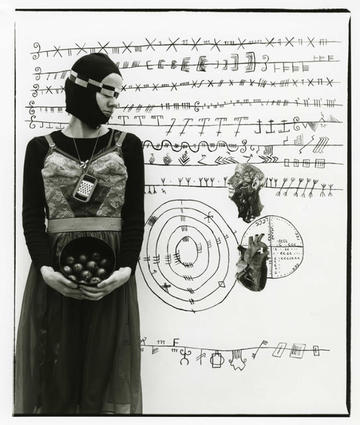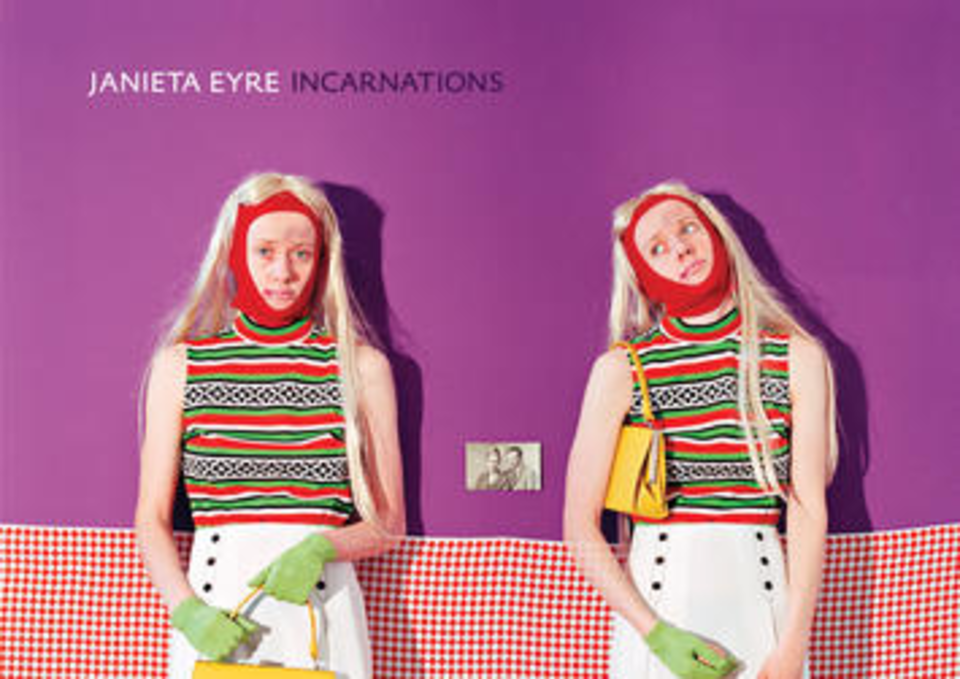
Inside Incarnations
The work of Janieta Eyre
Incarnations is a mid-career retrospective of Janieta Eyre's fantastic, carnivalesque work. Her hallmark self-portraits feature her twinned, flirting with the idea of morphous and multiple identities. Each completely unique photograph features shared iconography - pregnancy, menstruation, cheese graters, vegetables, farm animals, brocade dresses, and on more than one (or two) occasion, a framed copy of another one of her images.
Available everywhere beautiful books are sold, Incarnations is a tiny gem: full-colour glossy images are nestled between essays and poetry from some of Janieta's most daring contemporaries – Christian Bok, Lynn Crosbie, Richard Vaughan, David Dorenbaum, and Lori Waxman, all bound with paper over board. Below is a sneak peak between the covers, including part of the introduction by the book's editor Suzanne Zelazo, and if the spirit moves you, copies are available for sale here.
Sisters Sophie and Sarah, 2003
As an innovator and agitator, Janieta Eyre (1966-) has pioneered an integrative photographic aesthetic that pushes the boundaries of creative forms and subjectivity to confound ontological certainties. She deploys the currency of her own body not only to subvert gendered objectification, but also to challenge the extent to which we are imprisoned by own subjective projections and identifications.
The Mute Book #2, 2009
Although she is recognized primarily as a visual artist, narrative functions prominently in Eyre's photographs, creating highly nuanced image-texts. Her work underscores the fictional nature of autobiography and memory even as it highlights how the often limiting stories we tell ourselves about ourselves nevertheless retain a strong hold over self-understanding. Effecting a Bakhtinian dialogic, the heteroglossia of the photographs invokes a lineage of feminist experimentations in photography by artists such as Hannah Maynard, Suzy Lake, Francesca Woodman, and Cindy Sherman.
Making Babies, 2000
Eyre's work ruptures the very notion of mimesis even while performing its principles. Seeming to incarnate from the very material folds of her hand-sewn, carefully arranged costumes and backdrops, Eyre, as subject, enacts a living collage only to dissolve and eschew those representations in a plurality of becoming. Her experimentation with mimesis offers insightful theoretical observations of the gendered making and unmaking of language – visual, linguistic, and embodied forms of expression – to powerfully subversive ends.
From the manual of human dissection, 1999
Eyre's doublings, mirrored selves, and cloned configurations are not only uncanny in their own right; they also resonate specifically for me. As an identical twin, I have grappled my whole life with the complexity of mirrored relationality. In my experience, reflection can become recursive and therefore embodied. It creates a profound empathy which is enriching insofar as it opens up the possibility to identify with or even as an other, yet this preponderancy can also be horrifyingly claustrophobic.
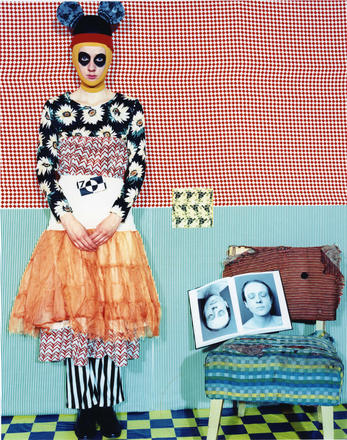
Two pages from my diary, 2000
That is, the permeability of empathy – of feeling so entirely understood in an other – comes with the threat of flooding, a chaotic erasure of self. Rather than being a function of a kind of twinship telepathy, Eyre's work suggests that this dichotomy is a function of shared experiences such as we encounter in works of art that move us. The overt and highly sensitized use of her own body makes us feel as though we are experiencing what Eyre does in the creative moment, recognizing it in – and therefore potentially as – our own lived experience.
